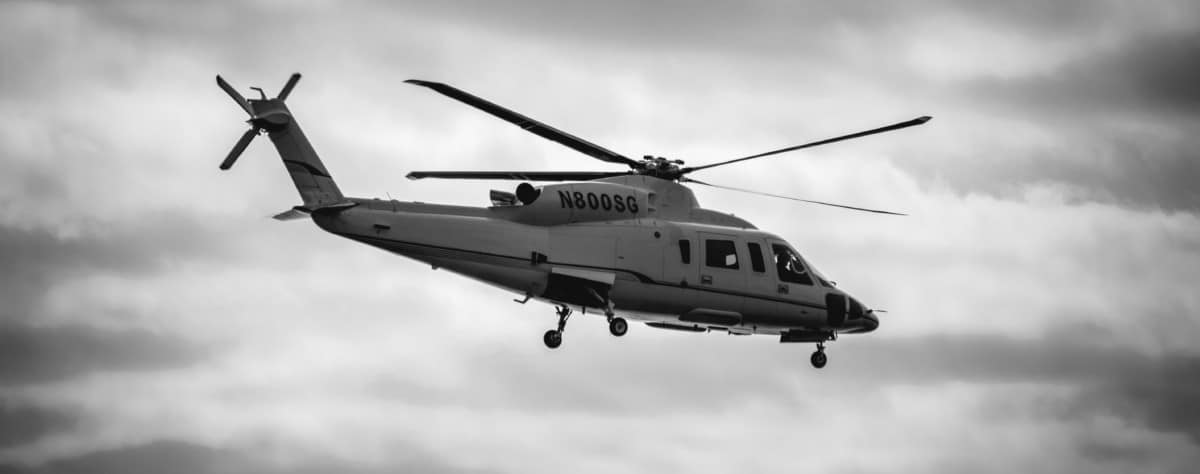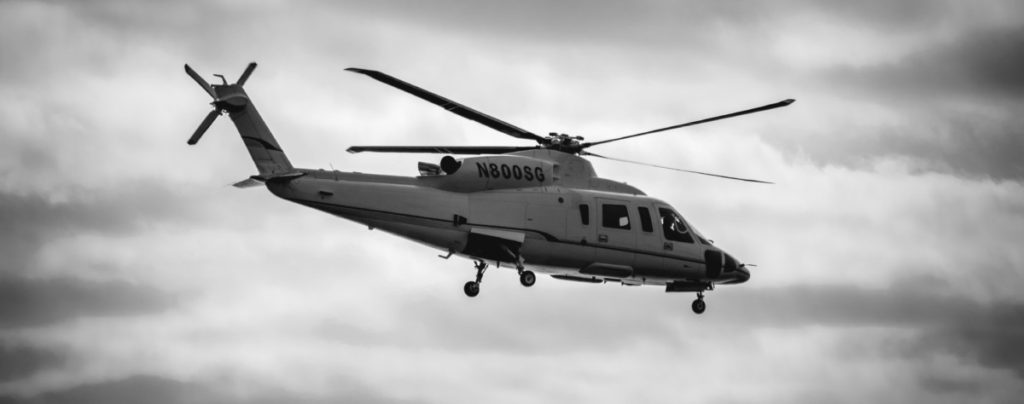
This was a question I remember asking my dad when I saw my first helicopter at an airshow. A Bell 47 was sitting next to a Westland Wessex helicopter that had wheels, so I asked my dad why the Bell didn’t have wheels. He didn’t really know, so here you are Dad, I’ll explain now I know why!
Wheels are generally fitted to large helicopters to allow them to be maneuvered easily on the ground and prevent their rotor wash from spraying dust and debris around while taxiing. The extra weight, moving parts, and cost make wheels prohibitive on smaller, lightweight helicopters.
In aviation, the design of a new helicopter is always a game of compromise. When designers begin draughting the specs for the helicopter many aspects of the helicopter’s main roles will be discussed to see whether wheels or skids are best suited to the current model.
This article is going to show you many of the reasons why some helicopters have wheels and some have skids. Skids are two horizontal tubes that the helicopter sits on.
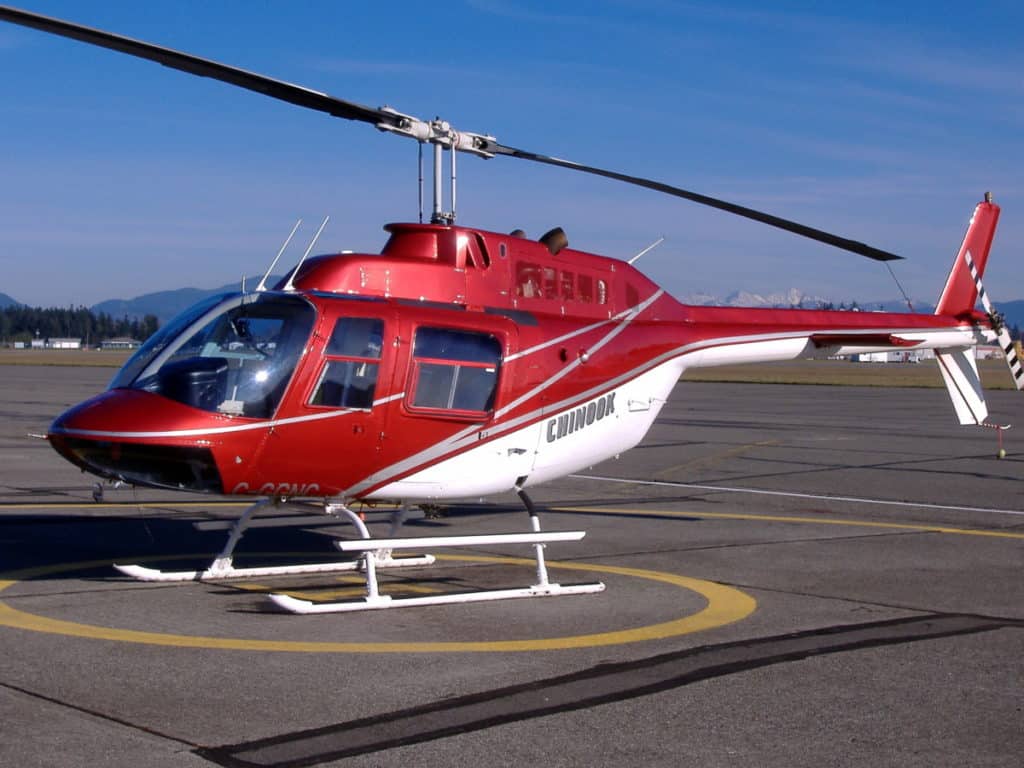
Weight
Saving weight is one of the primary fundamentals when the helicopter is in the initial design phase. The more the helicopter weighs, the more lift it has to produce to get it off the ground. Each helicopter can only produce a set amount of lift so there comes a point where fuel, passenger, and cargo weight start to be reduced.
The lighter the helicopter itself can be, the more useful the machine can become. On smaller helicopters, the easiest way to save weight and allow for a more useful payload is to fit skids.
A replacement pair of skids for even the bigger Bell mediums like the 205 & 212 can easily be carried by two people. The smaller machines like the Robinson R22/R44 or Guimbal Cabri can easily be carried by just one person. They are light!
Once wheels begin to be added, the weight starts to creep up. Tires, wheels, bearings, and suspension are heavy. Even machines that have fixed wheels like the Westland Navy Lynx or the Sikorsky S61 have no hydraulic actuators to move them inside cowlings but wheels still weigh a lot.
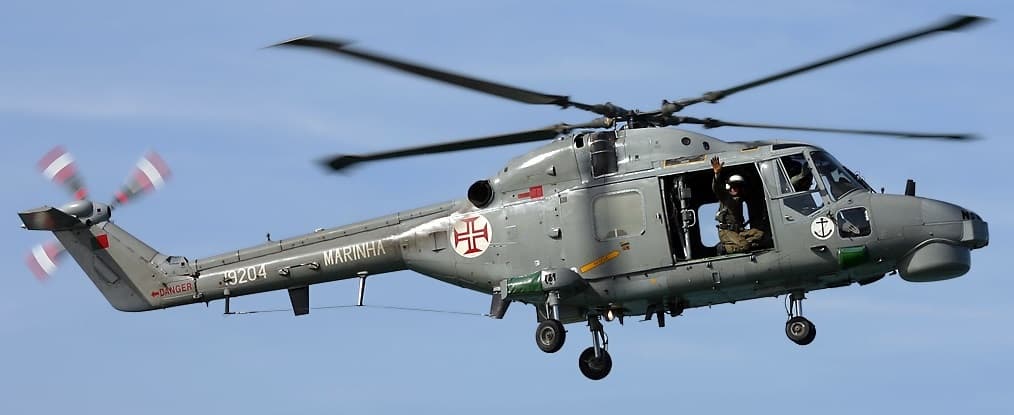
When I’m flying around in my Astar, I much prefer skids as that means I can take more cargo and take fewer trips. However, there are times when I miss the wheels of the Sikorsky S76!
When saving weight is a major design factor, skids are the best option.
Complexity
Moving parts on a helicopter add complexity. When wheels are added and are able to transition to a stowed position for flight, the mechanical/hydraulic linkages require an extensive design to be able to move as desired, take high-impact loads from hard landings, able to taxi on uneven surfaces like gravel and grass, and not jam when the ‘Gear Down’ lever is selected!
We have all heard of the saying “Keep it Simple” and simple means less design, less testing, less certification, less weight, fewer parts, less maintenance, and therefore less cost. If a helicopter requires simple to adequately meet the design specification, then skids win.
With no moving parts, easy to replace, and simple attachments, skids are again the best option for simple helicopters.

Join My Newsletter & Get Great Tips, Information and Experiences To Help You Become a Superb Pilot!
Cost
Increased costs at the design stage increase the individual purchase price of the helicopter. The more moving parts the helicopter has, the more the maintenance cost increases, this in turn then increases the hourly operating cost of the helicopter.
When helicopter operators are trying to make a financial profit in a tough market the operating costs need to be kept as low as possible to stay competitive. Depending on that market, the customers may be very frugal with their flying budgets.
With skids, the typical wear and tear come on the underside of the skid tube. To help offset the replacement of an entire pair of skid tubes many helicopter operators will install ‘Skid Shoes’. These are a steel strip that bolts to the underside of the skids. When they wear out they are replaced, at a much cheaper cost than a pair of skid tubes!
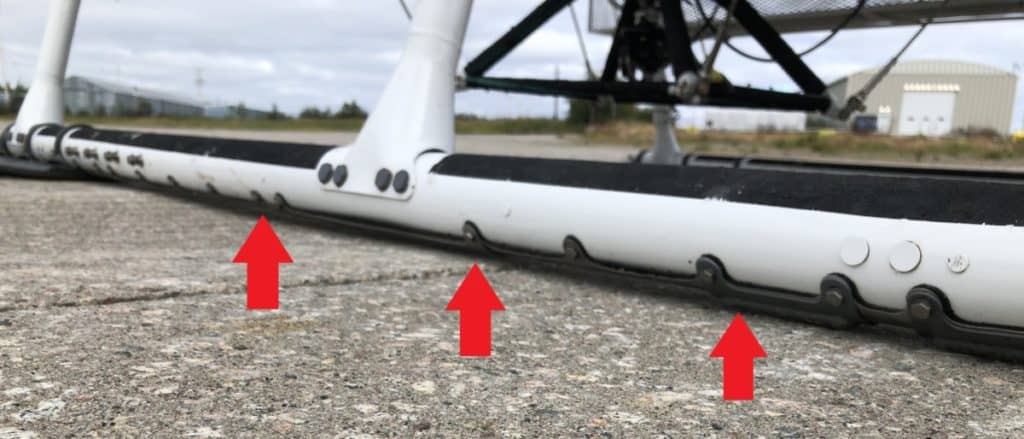
These really pay for themselves on helicopters used extensively for training. Running landings and full-down autorotations to taxiways really chew through the metal at a ridiculous rate!
On wheeled helicopters, tires, bearings, bushings, and actuators will all have a limited life which means they will have to be replaced at some point. When the hourly cost of a helicopter is several thousand dollars per hour, the customers’ budgets are healthy enough to pay for these increased maintenance costs, but when a person is learning to fly and the cost of the machine is several hundred dollars an hour, then every cent saved is certainly welcomed!
As much as I would have loved to have learned to fly on an Agusta A109 my budget only stretched to a Robinson R22! And even that budget hurt!
Maintenance
A well-maintained helicopter is one of my primary concerns as you may have heard the saying “A helicopter is just a thousand spinning parts trying to break loose and kill you!“
To some extent, this has some truth behind it so the fewer parts a designer can place on a helicopter, the simpler the maintenance becomes. On-going maintenance is just part of owning an aircraft and most items on a helicopter have a life span. Hours of use or a calendar date will dictate when that part needs to be replaced, whichever comes first.
Skids require very little maintenance and if damaged, can be easily replaced. Wheels require more extensive maintenance due to the many moving parts. Tires, bearings, bushings, actuators, and sensors all require inspection and replacement which requires time and money.
One of the few wheeled helicopters that require minimal maintenance on their landing gear is the Sikorsky S61s that are used for lifting. Their wheel configurations have been stripped of all excessive weight to allow them to lift heavier loads and be easier to maintain in the field.
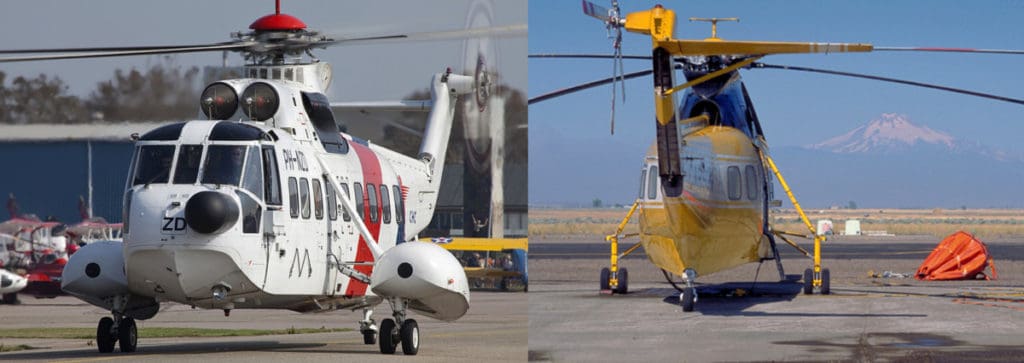
Drag
When helicopters are designed for speed the last thing a helicopter designer wants is parts sticking off the aircraft creating drag, slowing down the top cruise speed of the helicopter. A smooth, sleek fuselage, shaped like a bullet flies faster than bulky brick with bits sticking out all over the place.
The Sikorsky S76 and Agusta A109 are perfect examples of fast helicopters. They have wheels that retract into the fuselage to create the least amount of drag possible and in doing so these machines can be reaching the 150-160 kts cruise speed range.
The engineering involved to create these retractable landing gear systems is pretty cool and coming from an engineering background I personally find these linkage mechanisms fascinating but that just makes me a nerd!
The rear landing gear retraction design on the Sikorsky S76 is pure magic and this video shows how it operates:
When reducing drag is further down the priority list then non-retractable wheels and skids save on the weight, complexity, and cost – Again it all comes down to the targeted market the helicopter is aimed at.
Primary Landing Surfaces
The surface a helicopter lands on can be as varied as a Chinese restaurant menu. Skids and wheels both have their benefits and downsides to the varying types of landing surfaces and once again the helicopter designers will look at where the helicopter is going to be used the most.
Skids are better suited for soft, uneven ground like grass, snow, swamps, and rocky river beds, whereas wheels are better suited for airport and helipad operations.
Spreading the weight of the helicopter over a larger surface area prevents the machine from sinking into soft ground. Tires have a very small surface area on which the entire weight of the helicopter sits.
When I flew air ambulance operations in a wheeled helicopter we had to ask the medics to monitor how deep the wheels would sink into soft ground. If the wheels sank further than their axles we tried a different location. It could take many attempts, especially in spring or after heavy rainfall!
Skids do a good job of spreading the weight but the rear of the skids sit under the heaviest parts of the helicopter – the engine, transmission, and fuel tank/s. This weight can cause the rear parts of the skids to sink into the ground further than the front part of the skids. This can then allow the tail rotor to get very close to the ground!
For helicopters with skids that are primarily used in utility work owners will fit ‘Bear Paws’ to the rear of the helicopter skids to aid in spreading the weight of the helicopter and keeping the ‘Butt’ in the air.
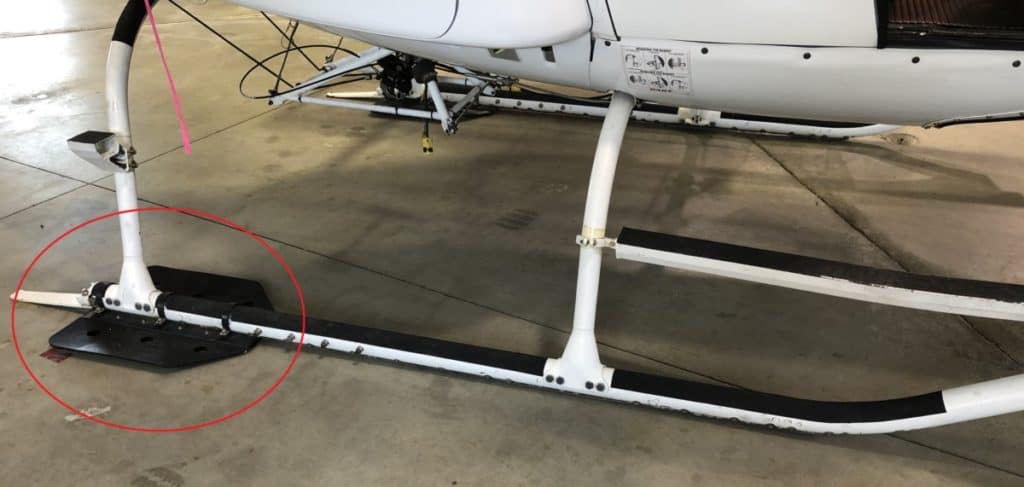
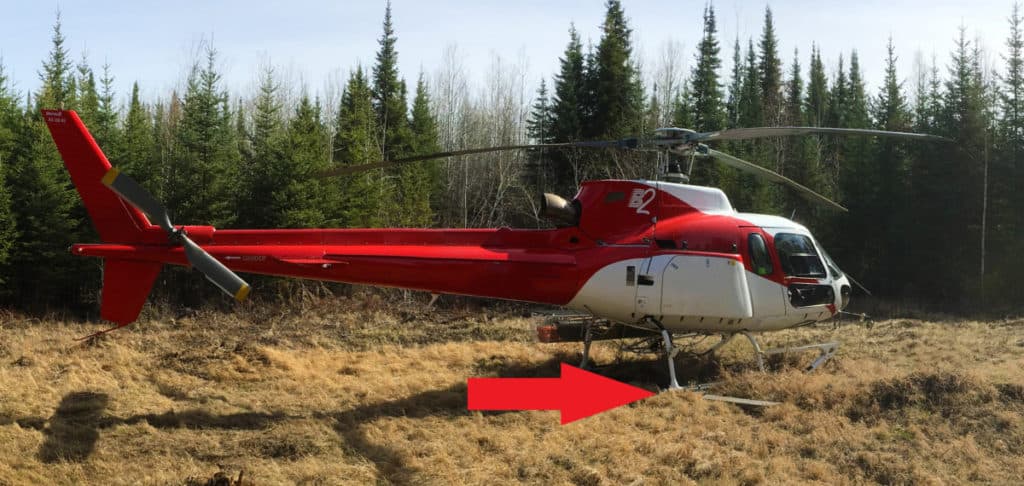
Taxiing
One of the main problems with skids is maneuvering the aircraft around an airport. To taxi a helicopter with skids into position the pilot needs to hover taxi around 5ft high or air taxi at around 40ft high. Both of these maneuvers allow the rotor wash to pick up and spread dust and debris at high velocity.
This debris is not good when trying to maneuver around an airport where a dozen private and corporate jets are parked, especially when each one can be worth tens of millions of dollars!
Wheeled helicopters are able to ground taxi using minimal rotor wash thus minimizing the amount of debris that gets thrown around the apron. When helicopters are used more for private and corporate transportation then wheels are better suited for the airport environment.
Helicopter Ground Handling
Max Gross Takeoff Weight – MGTW
This is usually the main factor in deciding when helicopters move from skids to wheels. Some of the biggest helicopters that use skids are the Bell Medium helicopters like the Bell 205, Bell 212, Bell 214, and Bell 412.
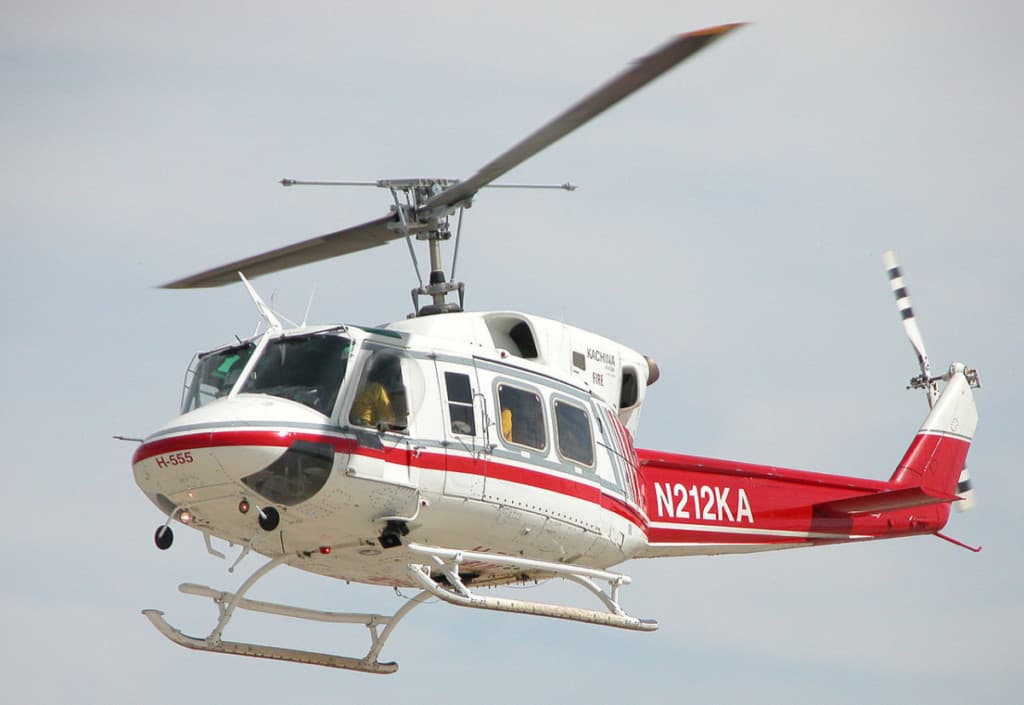
With their max gross weighing around the 11,000-12,000lb range moving this aircraft on the ground takes some form of a dolly or lots of bodies! I’ve helped push a 212 into a hanger and without 5-6 people it can be a real workout.
When helicopters are considerably heavier than this, the equipment and/or people required to move them become silly. This is when wheels become the better option.
It is pretty easy to see how pilots and engineers move helicopters that have wheels, they just attach a towbar and tow it with a quad or tractor. But how the heck do they move helicopters into the hangar that doesn’t have wheels!!??
Ground Handling Wheels
By far the simplest option and every helicopter that has skids will have a set of GH wheels that attach to pegs on the skids to lift and move the helicopter into the hangar. The GH wheels lift the helicopter by either a cam mechanism or a hydraulic jack.
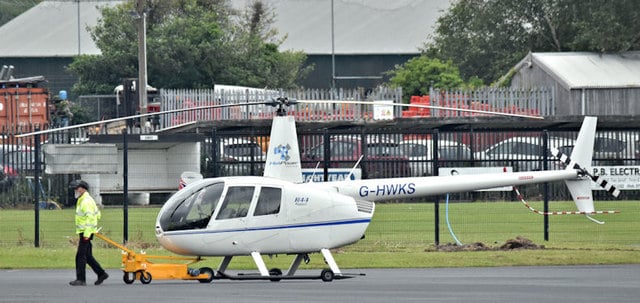
Ground handling wheels are good for light helicopters and even the Robinson R22 can easily be moved by just a single person. If you are a private owner and you have to move a larger helicopter on your own then you need other options to prevent you from giving yourself a hernia!
Helicopter Dollies
A dolly is basically a helipad on wheels. The simplest versions allow a helicopter to land on the dolly and be towed using a tractor or quad. Some of the lavish ones can be built into the driveways of luxury homes or even the decks of superyachts and move on rails right into the hanger! Alright for some hey!
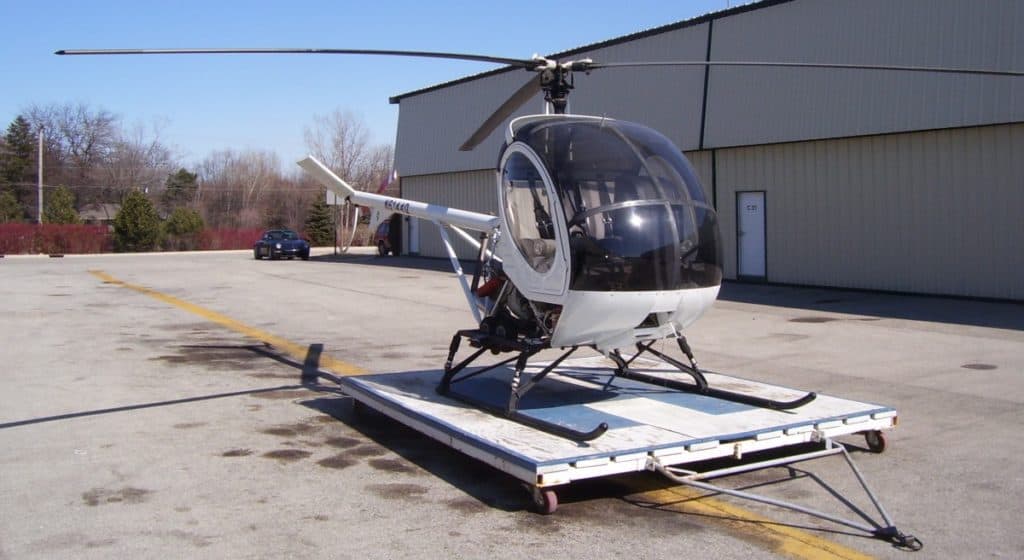
Tow Carts
Tow Carts come in many forms and some of the most popular versions attach to the skids of the helicopter using clamps and hydraulically pick the entire helicopter up off the ground, then they can be driven around by just a single person.
These can be a much better option than Dollies as it allows the helicopter to land anywhere outside the hanger. Landing on a dolly in high winds by an inexperienced pilot has led to some nasty rollovers! A Tow Cart eliminates this situation.
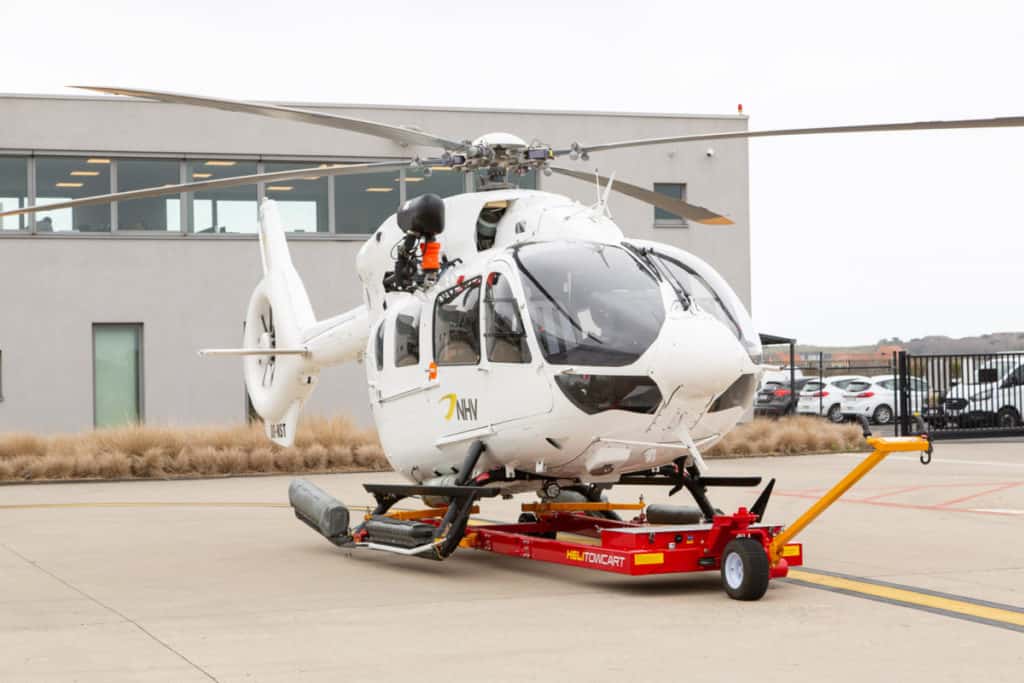
Ride Comfort
To some helicopter owners, luxury and comfort must come above all else. Having flown both wheeled and skid helicopters I can say without a doubt that the larger wheeled helicopters fly smoother and the pilot is able to pick up and set down the helicopter far smoother on a wheeled machine.
Skids have very little dampening capabilities when landing and it can be very difficult to make every landing as smooth as silk. In a helicopter with wheels, it is very easy to set down smoothly.
First, the tires compress, then the shock absorbers compress, then the full weight is taken up by the landing gear mechanism. Each of these components makes it super easy for the pilot to look like a rock star!
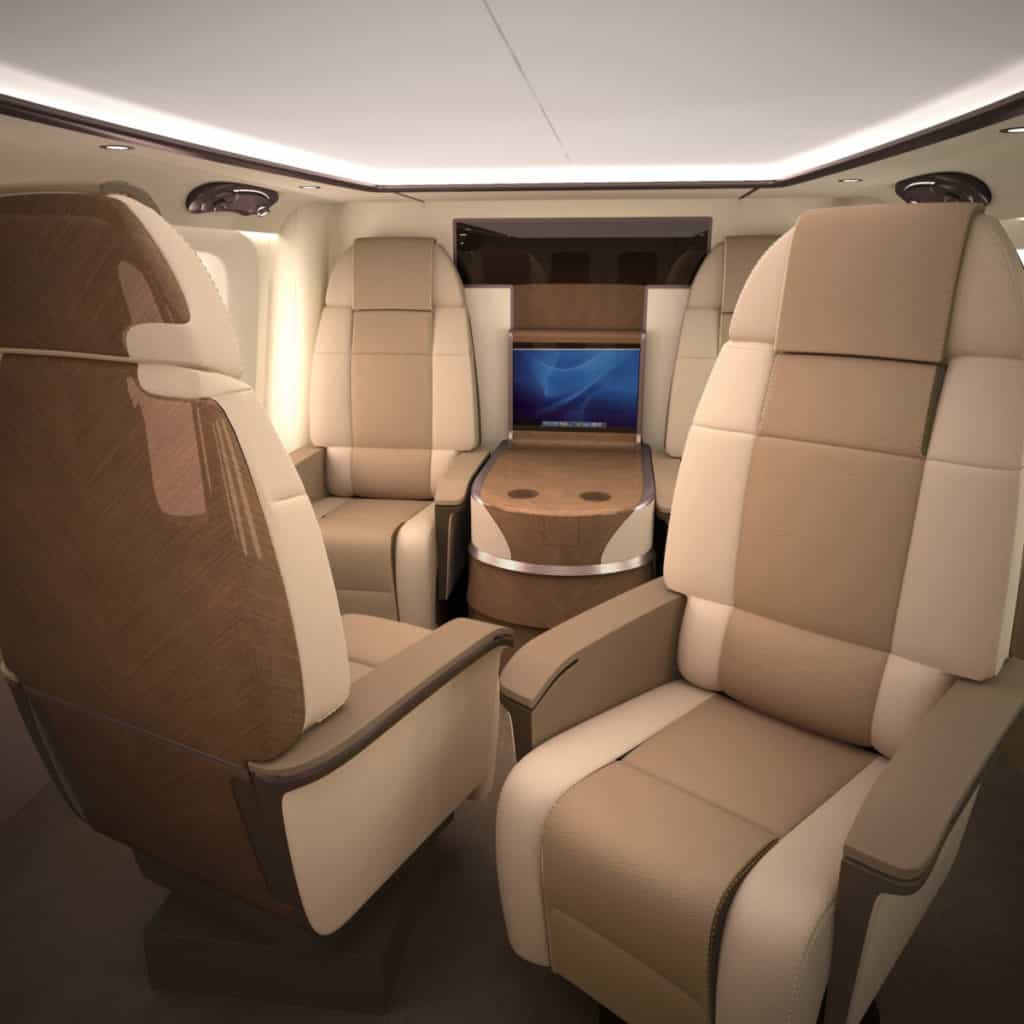
Although this might not seem a very important factor to most of us, for those passengers that are used to the highest standards in life it matters a lot. I have spoken to many VIP pilots and the ones that get removed from flying duty the most are the ones with rough hands!
To Finish
Each helicopter type has been designed to meet a certain target market and that market dictates whether wheels or skids are better suited.
There are times when wheeled machines work the best, but then there are times when skids work best. Just like a professional tradesman or lady, selecting the right machine for the job will give the best outcome.
In general, helicopters that work from concrete to concrete are best suited to wheels. For helicopters that never see an airport, then skids are king!
Further Reading
If you found this article interesting and would like to keep reading, I highly recommend the following articles from my blog:

